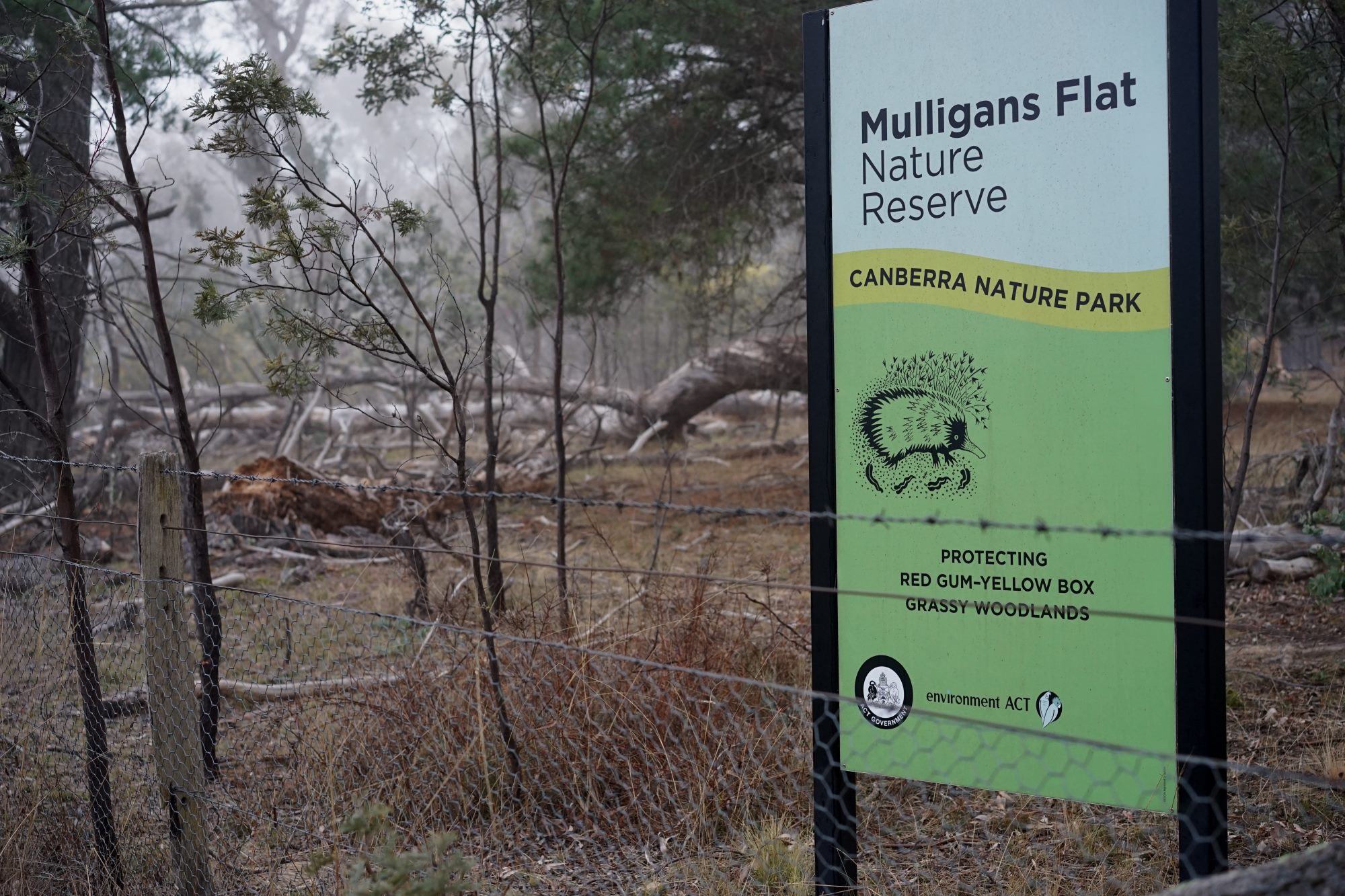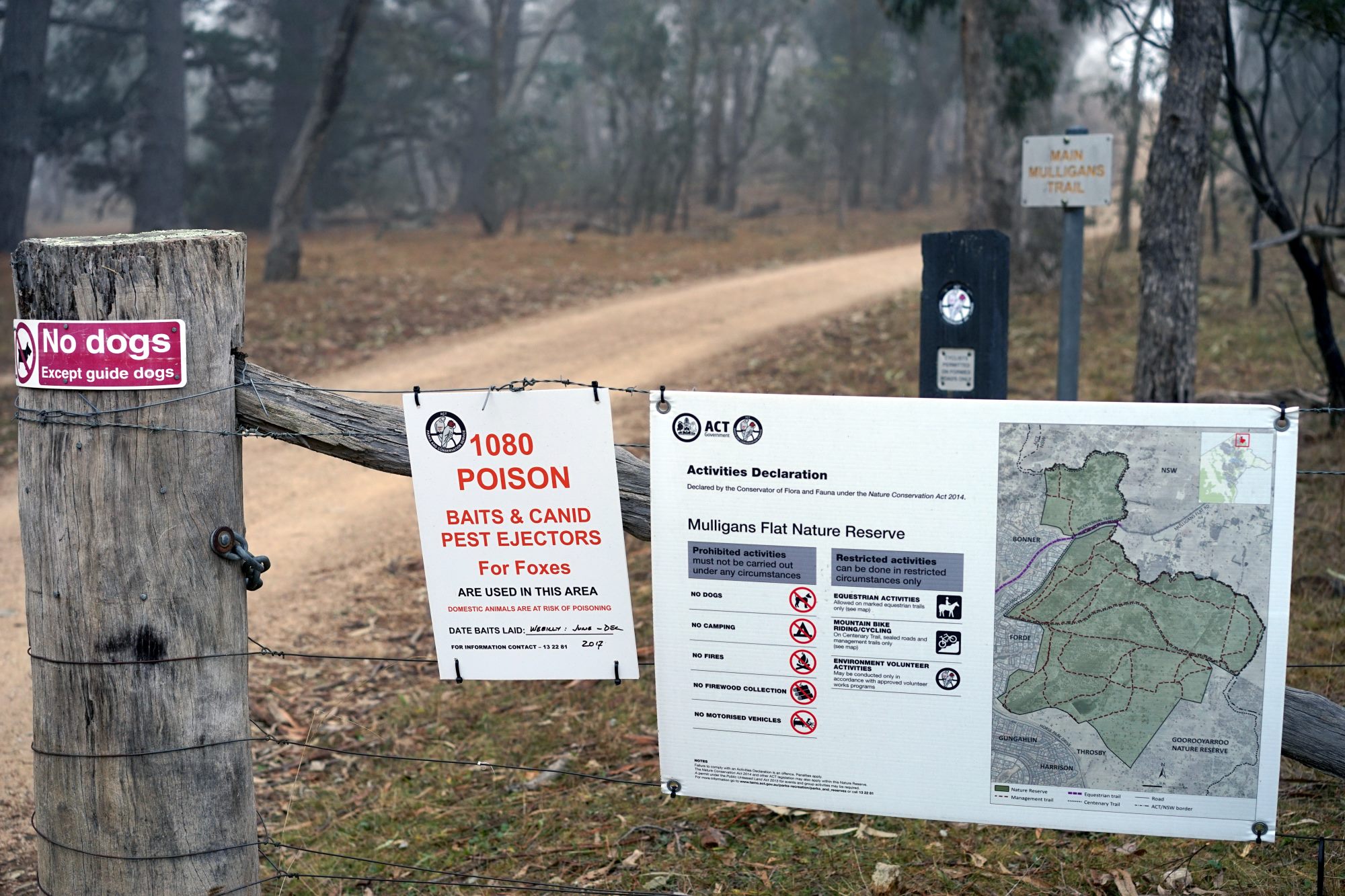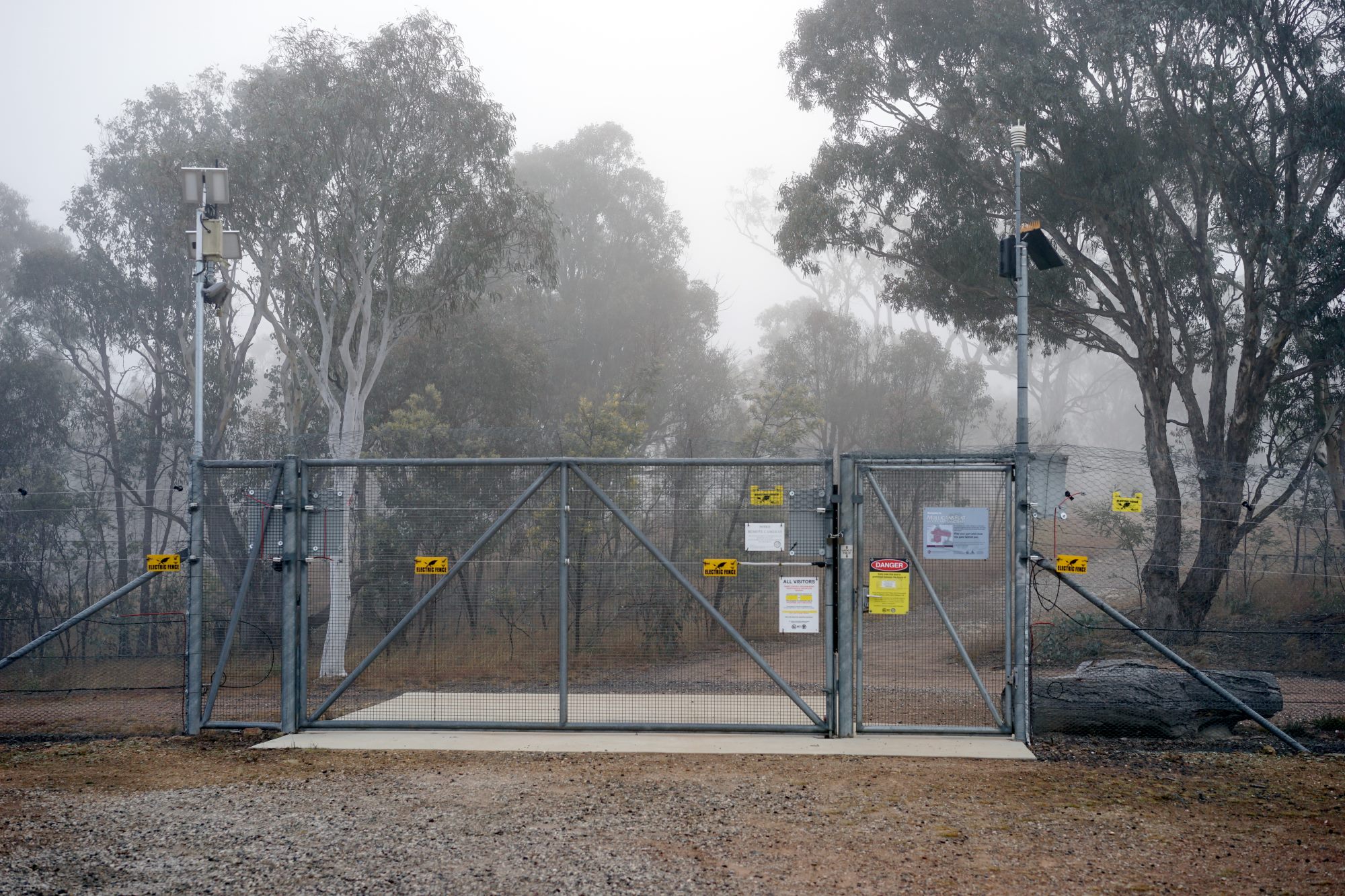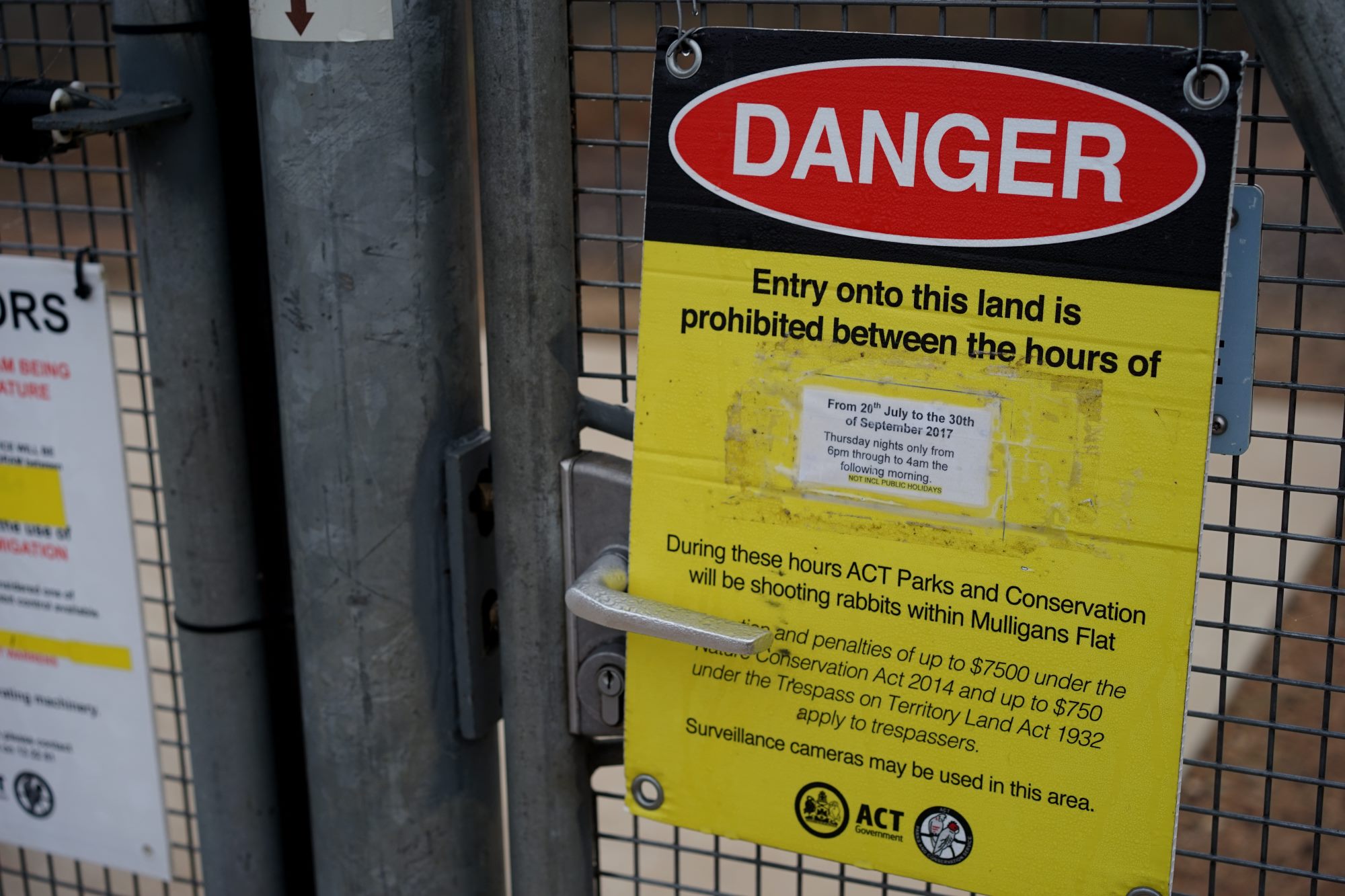The Fence of Sorrow and Hope
The Fence of Sorrow and Hope
I think it an ugly thing. Punched through a patch of scruffy bush outside Canberra, its steel gates and electric wire look like a prison of sorts, which it is. It jars me to find it in a nature reserve and it tells me of a sad history. But it is also story of recovery. Heroic or forlorn? I don’t know.
It skewers a remnant scrap of grassy woodland that once stretched far and wide; a land of sustenance with plants for every purpose, kangaroos and possums for feast and skin, and with quolls, bettongs, and echidnas scuttering about. A hard land, but it had homes for all and grew its people for millennia.

Image: Cameron Muir
New people came with sheep, disease and guns. Only a few in the 1820s, but enough by the 1840s to settle and breed at Mulligans Flat. Its long-nurtured grassy woodland made good sheep country, but no longer for the sickened, chased Ngunnawal. Shepherds tended the sheep on the open land until they became more expensive or scarce, wire became cheaper and rights to the land became secure. We don’t know when our old fence was built, possibly in the 1880s, but old fences have lost histories of wooden posts and rusty wires replaced; ours no less, no doubt.
I see it as sad, battered land now; the trees ring-barked and burnt, the native grasses gone, weeds everywhere, the soil trampled and eroded, the small animals driven out by sheep and rabbits, or killed by foxes and cats. A new suburb next door, a great city nearby, but this is what it has come to.

Image: Cameron Muir
There were a few patches of grassy box-gum woodland left. Little enough on Ngunnawal country, but ideas changed and they were kept. In 1994 a tattered block on a stony ridge was made the Mulligans Flat nature reserve. The sheep went, the kangaroos flourished, and with care further deterioration can be halted, but could the land be repaired? Could the bettongs and quolls return? Could the ecosystem as they call it now be re-created? There was good will, knowledgeable environmentalists, government funding, and ecologists keen to experiment. Nobody knew, but they could hope and try.
They burnt patches as the Ngunnawal people had done to renew the land and they put piles of old logs for animal homes, but they had to get rid of the weeds and rabbits before the plants could recover, and they had to get rid of the foxes, dogs and cats before the native animals could breed safely again. They built the great fence – eleven kilometres of it – too hard for cats to climb over, too deep for foxes to dig under. It went up in 2009 and the ecologists swarmed in to find out how to restore the birds and animals–even the reptiles and invertebrates–that had once lived there.

Image: Cameron Muir
A few echidnas survived on this scrap of land but ecologists had to bring bettongs and quolls from Tasmania as there were none left here. As I write in 2017, both species have started to breed and their future seems assured in the sanctuary, but not outside; foxes gobble up any that escape.

Image: Cameron Muir
The sanctuary offers hope, but of what? The ecologists can show results in scientific papers, but restoring an ecosystem will be an endless, perhaps impossible task. The government can show that its community and scientific partnership works, but the sanctuary is expensive to run. The environmentalists are heartened that their arguments have at last born fruit, but only locally. Perhaps it will lead on to broader restitutions, not just in sanctuaries.
I can see the hope in the fence, but I feel its sadness.
John Dargavel is an ancient forest historian.

